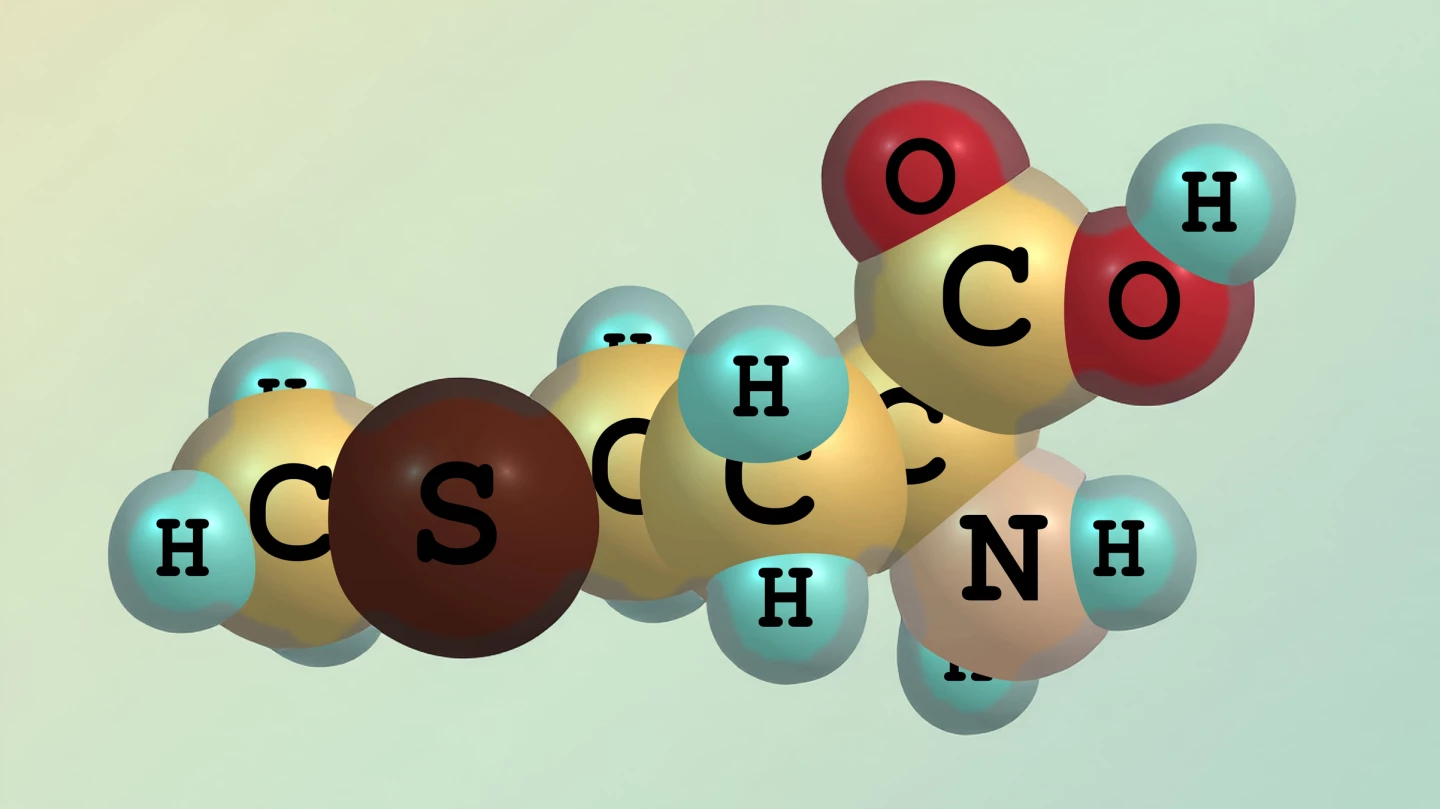Reducing our intake of a single amino acid called methionine, which we get from the food we eat, could help protect against disease and promote healthy aging. Now, scientists have developed a world-first method of studying the effects of this critical compound.
Amino acids are the fundamental building blocks of proteins, and 20 of them play vital roles in a range of human bodily functions. Nine are termed “essential” amino acids because the body can’t make its own and must obtain them through the diet. They are histidine, isoleucine, leucine, lysine, methionine, phenylalanine, threonine, tryptophan, and valine.
New research by scientists from Vilnius University (VU) in Lithuania has zeroed in on one of these, methionine, highlighting the potential benefits of restricting it as a strategy to combat aging and disease. To achieve this, the scientists developed a world-first method for studying the important amino acid.
Think of methionine like a Lego block. It is the starting point for building the proteins your body needs to grow, repair, and function. And it’s the starting point for making a chemical called SAM (S-adenosylmethionine), a “molecular tagger” that adds methyl groups to DNA, proteins, and fats to control how your genes work, how your brain functions, and how your body handles fat and energy. Methylation plays a crucial role in the aging process and the development of diseases such as cancer.
Methionine is found in animal and plant-based foods, in varying amounts. Red and white meat, fish, shellfish, eggs, and some nuts (Brazil nuts, in particular) are high in the essential amino acid. Fruits and vegetables are generally lower in methionine. Tofu and dairy products occupy a middle ground between the two. Eating a vegan or plant-based diet would, therefore, provide lower amounts of dietary methionine. However, as with most things in life, striking a balance is essential. If your body has too little methionine, it may struggle to grow and repair tissues properly. Too much methionine has been linked to health issues like heart disease, inflammation, neurodegenerative diseases, and some cancers, especially if it throws off methylation patterns. Which leads neatly to the research that VU scientists undertook in 2024.

They wanted to create a precise way of studying how cells use methylation to regulate DNA, without needing to starve the cells of essential methionine. So, they engineered a version of a mouse enzyme (MAT2A) that helps make SAM. However, instead of the regular version, they engineered the enzyme to accept a synthetic version of methionine, known as N3-Met. Without getting too chemistry-heavy, this synthetic methionine was turned into a special molecule (Ado-6-azide) that carries a “tag” which can be detected in cells. This allowed the scientists to track where methylation occurs. They also paired the engineered MAT2A enzyme with another enzyme, DNMT1, that naturally tags DNA, enabling a “tag-and-track” system in living cells. The scientists discovered that they could track methylation patterns in real-time and map them across the entire genome.
This world-first technique offers a minimally invasive, precise tool for studying how cells regulate gene expression, which could help scientists gain a deeper understanding of aging and cancer. Previous studies have shown that reducing methionine intake can significantly affect aging in various organisms. A 2013 study, for example, found that restricting dietary methionine by 80% in rodents slowed the progression of age-related disease and prolonged lifespan. And the link between cancer and methionine has been known about since the mid-1970s, with research demonstrating that cancer cells require more methionine from external sources than healthy cells do.
Now that VU scientists have created the means to do so, they’ve opened the door to studying other types of methylation, such as in RNA or proteins, across different cell types and, potentially, whole organisms. They are currently investigating the effect of restricting dietary methionine as a potential strategy for combating aging and reducing cancer risk.
The study was published in the Journal of the American Chemical Society.
Source: Vilnius University






